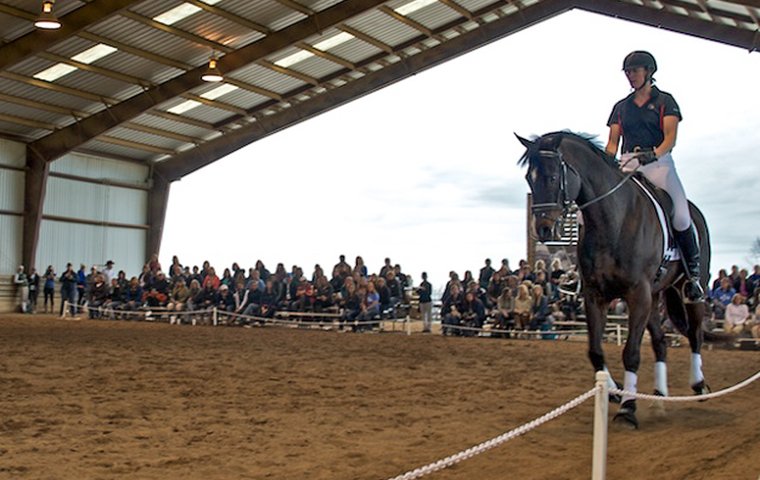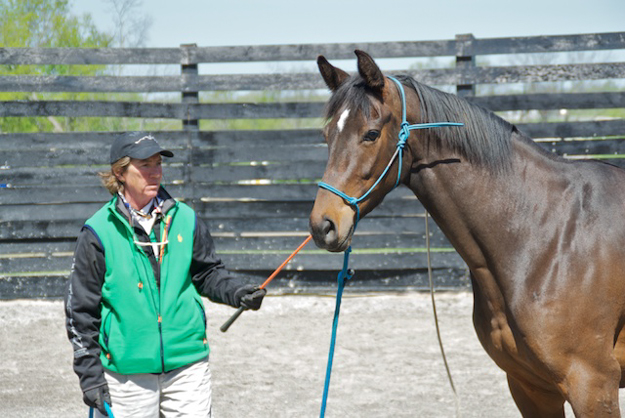
Around the time of the Kentucky Derby I always get a number of questions about the race, horses, Kentucky, etc. -- everything ranging from “What happens in the infield?” and “Who do you like?” to stranger things such as “Don’t they hold the Derby at the Kentucky Horse Park?” I’m sure this happens to a number of other horsey people, especially those who have ever called Kentucky home.
However, the one that I think is one of the hardest to answer, and one that is honestly not asked enough, is “What happens to the horses after they are finished racing?”
For me, this is the hardest question because there isn’t a solid answer. Yes, some to go stud farms, some become riding horses in other disciplines, some become steeplechasers, some go retire on a farm. Some, unfortunately, meet grimmer outcomes, and for many, we just don’t know. This isn’t a good answer and can be especially difficult for the non-horse, or non-racing, person to understand.
Recently, aftercare organizations have been making huge strides to make sure Thoroughbreds can live out the remainder of their lives in dignity. With growth of both the Thoroughbred Aftercare Alliance and the Retired Racehorse Project and their promotions of aftercare; contributions from racing organizations such as the partnership between Kentucky HBPA, Churchill Downs, and Keeneland; the increasing number of riders registered in the Thoroughbred Incentive Program; and a recent anti-slaughter bill introduced in Congress, I think we’re building a solid foundation for Thoroughbred aftercare.
However, a big piece of the aftercare question is finding second careers for the horses who are sound and willing enough to be successfully retrained for another career with a new owner. And furthermore, showcasing these retired and retrained horses to promote the sound retirement of horses who are no longer suited for life on the racetrack.
The weekend before the Derby, I was able to see beginning stages of the retraining process of a few former racehorses through the Retired Racehorse Project’s “Thoroughbreds for All” event at New Vocations and its founding members’ gathering at the Maker’s Mark Secretariat Center. These events coincided with the Rolex Kentucky Three Day Event (RK3DE) at the Kentucky Horse Park, the only regularly held four-star eventing competition in the Western Hemisphere -- a big deal for eventers.
The demonstrations put on by RRP, New Vocations, and the Maker’s Mark Secretariat Center were a great display of the talent and intelligence that Thoroughbreds have. Many of the horses in the demos had only gone through a few weeks of training and are entrants in the RRP’s “Thoroughbred Makeover” at the end of October in Kentucky. The “Makeover” is an annual event that showcases the breed in a number of disciplines and awards prizes as an effort to restore the market for off-track Thoroughbreds, it has grown from a grassroots event to a larger celebration of the breed with more than 300 entrants to compete in its Makeover contest this fall. Even with the limited retraining that some of these Thoroughbreds had (a few had only been ridden off the track a handful of times), they seemed like promising mounts and I can’t wait to see how they shape up for the Makeover.
Along with seeing these potential future stars, RK3DE attendees watched many talented Thoroughbreds compete in the world-renowned event. After the final scores were tallied on Sunday, no other breed was as strongly represented as the Thoroughbreds -- they took a quarter of the top 20 placings. The highest-placed Thoroughbred team was Donner (aka “Smart Gorky”) and rider Lynn Symansky who finished 12th.

Both events, the RRP’s demonstrations and RK3DE, are excellent opportunities to show off the versatility of the Thoroughbred breed and prove that there is a future for Thoroughbreds after racing if they are retired sound. With many RK3DE attendees being horse owners, eventers, and possibly in the market to purchase their next horse, the RRP demonstrations came at a perfect time to advertise the off-track Thoroughbreds available for adoption at both New Vocations and the Maker’s Mark Secretariat Center. Having RK3DE competitors Laine Ashker and Lynn Symansky, and Olympian Dorothy Crowell on hand to tout off-track Thoroughbreds didn’t hurt the cause either.
And I’m sure that the Thoroughbred Makeover in the fall and the activities surrounding it -- the National Horse Show, the Hagyard Midsouth Three Day Event and Team Challenge, and the Breeders' Cup -- will further promote sound retirement of off-track Thoroughbreds and put the breed on a national stage again. These events and their top-level Thoroughbred competitors are also easy things to point out when asked about what horses do once they finish racing.
I don’t know if there will ever be an all encompassing answer to the aftercare question, but I hope in the future it’ll be easier to connect the dots from racing to aftercare.


